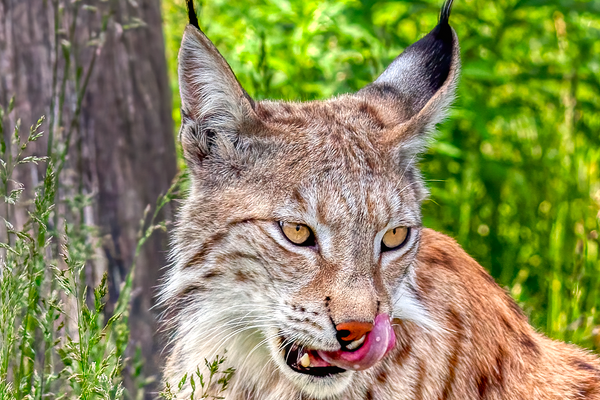Paging Through the World’s Handy, Adorable Orca Catalogs
A who’s who for the orca set.

In the northernmost reaches of the Atlantic Ocean, off the coast of the small Icelandic village of Grundarfjördur, among a pod of about 360 orcas, lives a whale family caught in an accidental double life. The mother orca, a young adult female, has a very distinctive dorsal fin, with a graceful taper and a deep notch that brings to mind a missing tooth. Her two calves—a four-year-old and a six-month-old—follow her around, playing and learning how to hunt. They tend to show up in Iceland around November, and leave again in April, to summer in the seal-rich waters off the Northern Isles of Scotland.
To the orca, this probably all seems entirely normal. But to the humans who study her, these summer vacations have spurred a small identity crisis. While experts in Iceland know the whale as Vendetta, aka #SN069, those in Scotland call her Mousa, aka #019. Her eldest calf is caught up in it, too—in Iceland, he’s called Attack. In Scotland, he has a much more peaceful name: Summer. The youngest calf skirted this problem—after the overlap was determined, he was named Tide in both countries, via an international contest.
Such are the small dramas of orca catalogs: exhaustive databases of local orca populations, carefully compiled by researchers and conservationists, and shared with everyone who might be interested, from aspiring citizen scientists to whale watchers. A kind of Facebook for whales, these catalogs allow for quick identification, support long-term research, and encourage the coining of cute nicknames. “You need to know the individuals,” says Marie Mrusczok, founder of Orca Guardians Iceland, and the compiler of the catalog “Killer Whales of West Iceland,” released this past April after three years of work. “A catalog does that perfectly.”

Biologists interested in keeping track of populations of any animal are often first tasked with identifying particular individuals. To our human-biased eyes, animals can be difficult to tell apart. To make things easier, observers can focus on visible body parts that differ between individuals—and persist throughout the animal’s lifetime. Lions and sea lions alike are recognizable by the arrangement of their whisker spots. A Grevy’s zebra truly can’t change its stripes, and thus can be identified by them. Even weedy seadragons sport unique flank splotches, which scientists can pinpoint with the help of special software.
An orca’s calling card rides on its back—specifically, on its dorsal fin. Each starts out with a distinctive shape, and over the course of a whale’s life, it usually picks up scratches, nicks, or scars that differentiate it further. And just behind the fin is the saddle patch, a swath of lighter skin that also has a unique shape and shade.
“The fin is like a fingerprint, or like looking a human in the face,” says Mrusczok. “They’re so different from each other.” Take, for example, the dorsal fins of Aurora and Snowflake, two other females who live around Grundarfjördur. Aurora’s fin has a knobby top, and is slashed with three heavy scars. Snowflake’s is more gently sloped, and has a small, evenly-spaced notches.

Orca researchers have paid special attention to the whales’ markings since at least 1945, when a naturalist named G. Clifford Carl drew the eyepatches of thirteen whales stranded at Estevan Point in British Columbia. But it wasn’t until the 1970s, when marine biologist Michael Bigg was put in charge of censusing whales for the Canadian Department of Fisheries and Oceans, that anyone thought to do this systematically, and at a larger scale. Bigg and his team determined that all orcas have a unique enough fins and saddle patches that they be reliably distinguished by those traits. They set the standard for identification photographs—framing only the fin and patch, and taken in silhouette from the left side.
Today, orca research groups across the world keep catalogs, and update them consistently. Compiling one is an early priority: “Photo identification is the foundation of modern cetacean research,” says Eve Jourdain of the Norweigian Orca Survey. Once a robust catalog has been put together, experts can use it to study everything from social structures and behavior patterns to population trends over time. Jourdain’s group is working on comparing Norway’s current catalog, which dates back to 2007, with data from the late 1980s, “to identify whales still swimming in Norwegian waters over 25 years later,” she says.

“The ID catalog helps us get the basics. How many do we have here? What are the group structures?” says Mrusczok. “It can help me find out migration patterns, and what they feed on.” Comparing catalogs with Scotland has helped Mrusczok and other experts keep track of when and where migrating individuals, like Vendetta and her calves, travel.* This has led to another interesting finding regarding how orcas hunt and eat.
Most orca groups are thought to stick with a particular prey, which they hunt using strategies that have been passed down through generations. The orcas in Iceland are known for “carousel feeding,” in which they herd schools of herring into balls and stun the fish with their tails, while Argentinian orcas prefer to beach themselves and drag seals into the water. But Vendetta and her traveling companions eat herring in Iceland and seals in Scotland—a surprising lack of pickiness. Since then, more unusual feeding behaviors have emerged in Iceland. “We call them generalists, because they can feed on many things,” says Mrusczok. “They’re sneaking up on the eider ducks as well. We saw one group killing a harbor porpoise.”

Having a catalog is also great for public outreach. “We want to make people aware of how unique they are,” says Mrusczok. During whale watches, she points out particular orcas by name; if the people onboard are so inclined, they can later “adopt” one of those individuals, with the money going to conservation and outreach. When a local resident approached Mrusczok last year and offered to make a sculpture of an orca for the village center, he modeled it after a big local male named Thunderstorm. Mrusczok scratched and nicked the statue’s fin herself, to make sure it was just right.
Different catalogs brim over with local flavor, adding to this sense that orcas are members of the community. The United Kingdom gives their whales names such as Floppy Fin and Moneypenny. Iceland, which is full of filming locations for The Lord of the Rings and “Game of Thrones,” has male orcas dubbed Boromir, Faramir, and Jon Snow. One entrant in Western Australia’s Project ORCA database earned the name Miro—or “spear-thrower” in Noongar, the region’s aboriginal dialect—after she was seen attacking a beaked whale in 2016.

Although Mrusczok takes most of the Orca Guardian catalog’s photos herself, she is always soliciting submissions from the public, both to gain more data points for her own research and to encourage a sense of community responsibility. “People send photos to us and say, ‘Can you tell us who that is?’” she says. “If they’re good enough pictures, we can tell them. That’s quite fun.”
With a bit of practice, laypeople can also look up whales themselves—a process Jourdain’s group has tried to make easier by structuring the online version of their catalog as an interactive flowchart. (Very occasionally, the resulting enthusiasm backfires. After a fan asked “Is that Ruffles?” on a picture of a wavy-finned Icelandic orca, the Orca Guardians had to respond truthfully: “No, Ruffles is dead.”)
Keeping track of individual orcas gives the researchers a sense of connection, too. Although it takes a minute to get her to admit it—“You should love all your kids equally,” she says—Mrusczok has a favorite orca: Snowflake, the female with three nicks in her fin. Back in 2014, when Mrusczok had just moved to Grundarfjördur to work with the orcas, they used to swim into the fjords by passing underneath a bridge. “Every time Snowflake would go under the bridge and I was standing on it, she would turn her head around,” Mrusczok says. “I don’t know if she did it with everyone, or if she knew it was me.” Maybe, deep down in the ocean, the orcas have a catalog for us.
CORRECTION: This article previously attributed the discovery of Vendetta/Mousa’s migration incorrectly—experts have known about it since before 2014.





















Follow us on Twitter to get the latest on the world's hidden wonders.
Like us on Facebook to get the latest on the world's hidden wonders.
Follow us on Twitter Like us on Facebook